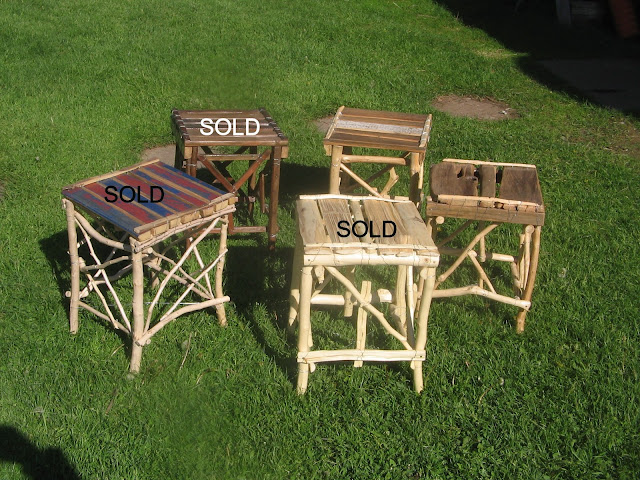Alder comes up from a central root, and spreads out in all directions, so it's hard to get at the base of it with an axe or chainsaw. Then, after all the multiple stems are cut, you still have to try to uproot the root of it, and when you do that, it sometimes jams into the plow and you have a heck of a time getting it out. There's no shortage of alder-brush in Northern Minnesota; it seems to come up everywhere.
For those reasons, I've always considered it a junk wood. I was surprised when my dad brought some over on the day he came to help me scrape maple. But when I noticed how easy alder was to peel compared with some other woods, and its interesting reddish-orange color after being peeled, I thought maybe it would be worth making a stool of.
When I split a length of it, it was even more interesting. When first split, the wood is almost white; but within less than an hour, it begins to change color to a nice salmon color.
 The alder is the reddish-orange wood towards the back of this photo, just in front of the balsam.
The alder is the reddish-orange wood towards the back of this photo, just in front of the balsam. It's just soft enough to drive a nail into without pre-drilling, but hard enough that it sands nicely without "fuzzing". I really like the looks of the stuff once it's out of the field, and no longer something to wrestle with, but something to sit down and rest on.
The seat is made from some of the pine boards I found on the brush pile behind the garden. It just happened to have been painted with a coat of off-white covered by a coat of reddish-orange, a perfect match for the alder stool.
Alder turns out to be one of the easier woods to work with. However, since I'm not charging more for the more difficult woods, I'm not charging less for the easier woods either. $65.
For general info about these stools, please see Introduction.






































